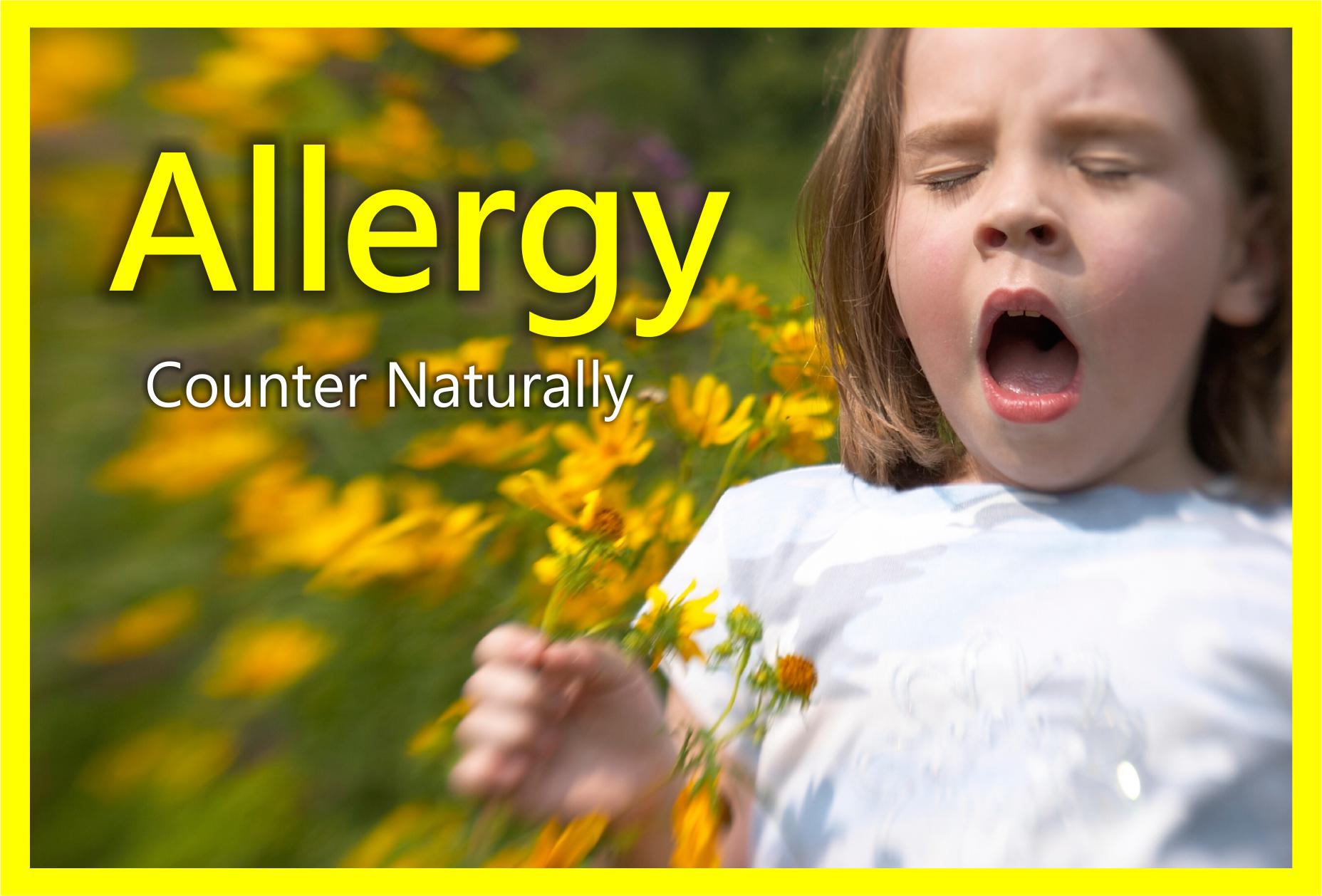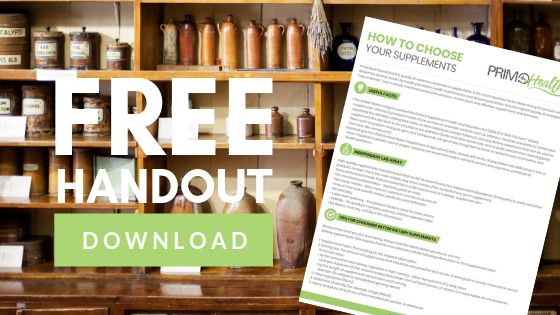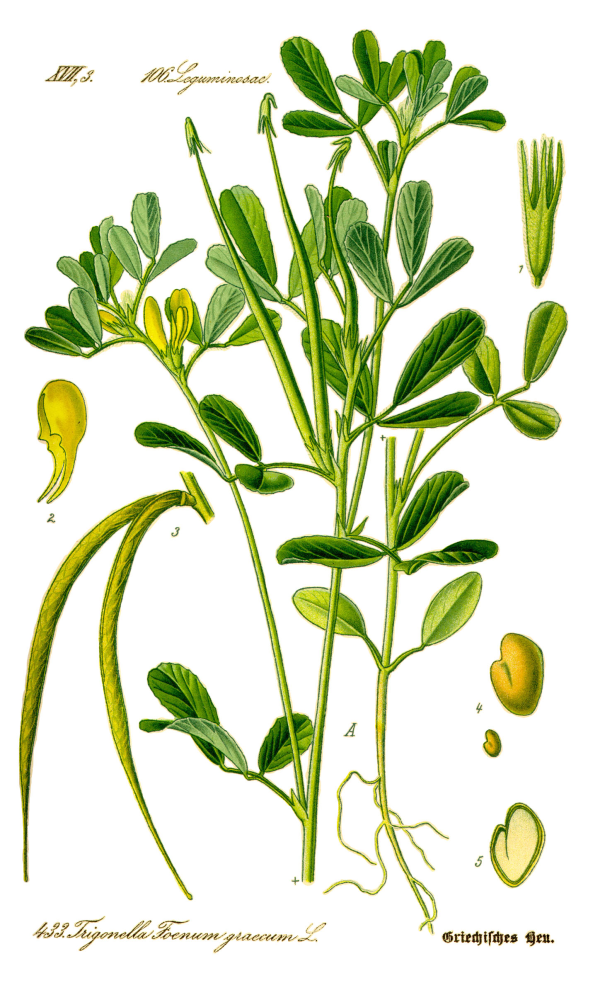
By Gene Bruno, MS, MH
Smart SupplementationTM is a free series of educational literature created by Huntington College of Health Sciences (HCHS) as a public service....
Colds, Flu & Sinusitis: Herbal Relief
By Gene Bruno, MHS, RH(AHG)
 Cold, influenza (flu) and sinusitis are three common upper respiratory conditions that affect a great many people. Besides being upper respiratory infections, they also have in common that three herbs (Andrographis, Eleuthero and Echinacea) have been shown to be effective in their treatment. This article will discuss the research associated with these herbs on the aforementioned conditions. First, however, let’s have a brief review of the conditions
Cold, influenza (flu) and sinusitis are three common upper respiratory conditions that affect a great many people. Besides being upper respiratory infections, they also have in common that three herbs (Andrographis, Eleuthero and Echinacea) have been shown to be effective in their treatment. This article will discuss the research associated with these herbs on the aforementioned conditions. First, however, let’s have a brief review of the conditions
Most people contract one or more colds every year. A cold is caused by viruses that infect cells of the upper respiratory tract. Since there are over 200 different species and strains of these viruses, a cold caused by one virus does not protect a person from catching a cold caused by a different one. This explains why colds can occur one after another or several times a year.1
Influenza, or “flu”, is a highly contagious viral respiratory infection. It is caused by orthomyxovirus types A, B, and C, which are spread by direct person-to-person contact or by airborne droplet spray. Flu generally occurs in the late fall and early winter and can reach epidemic proportions when a modified form of the virus emerges for which the population has no immunity. All age groups are susceptible, but the prevalence is highest in school-age children. Its clinical manifestations often resemble a severe form of the common cold.2
Sinusitis is a swelling of one or more nasal sinuses. It is caused by bacteria (streptococci, staphylococci, pneumococci, Haemophilus influenzae); viruses (rhinovirus, influenza virus, parainfluenza virus); and fungi (aspergilli, Dematiaceae, Mucoraceae, Penicillium sp.). Onset frequently occurs after an acute respiratory infection but may also be triggered by a dental procedure or gum infection, allergic rhinitis, diving or swimming episode, or sudden drop in temperature.3

Andrographis has a history of use in both Ayurvedic and traditional Chinese medicine.4 It contains a number of bitter constituents which appear to have both immune-stimulating and anti-inflammatory activity.5 Double-blind studies have found that Andrographis may help reduce the severity of symptoms in individuals 6 7 8 9 suffering from the common cold.
In the very recent past, Eleuthero was commonly called “Siberian Ginseng.” Although this name was botanically incorrect since Eleuthero is not even in the same genus (plant family) as Panax ginseng, it was an understandable appellation since many of its functions were the same. For example, like Panax, Eleuthero shows excellent adaptogenic activity (an adaptogen is an agent that helps the body adapt to stress). Russian explorers, divers, sailors, and miners also used Eleuthero to prevent stress-related illness.10 In addition, evidence also suggests that Eleuthero may prove valuable in the long-term management of various diseases of the immune system, including HIV infection and chronic fatigue syndrome.11 Referred to as ci wu jia in Chinese medicine, it was used to prevent respiratory tract infections, colds and flu.
 Echinacea purpurea
Echinacea purpureaEchinacea is an immune stimulant/supporter, and is excellent in the prevention and treatment of colds and influenza. Research suggests that Echinacea supports the immune system by activating white blood cells (lymphocytes and macrophages).12 In addition, Echinacea appears to increase the production of interferon, which is important to the immune response of viral infections.13 In any case, a number of double-blind, clinical studies have confirmed Echinacea’s effectiveness in treating colds and flu.14 15 16 17 18 However, some research suggests that Echinacea may be more effective if used at the onset of these conditions.19 20
Besides colds and flu, Germany’s Commission E Monographs (an internationally authoritative source of credible information on the use of herbs for various disorders) indicates that among Echinacea’s uses, this herb can be used to treat chronic infections of the respiratory tract.21
Now that we’ve briefly reviewed what each of these herbs can do individually with regard to upper respiratory infections, let’s see what some of them can do when combined together.
Treating the Flu: Andrographis & Eleuthero
In two randomized, parallel-group clinical studies22, patients diagnosed with influenza (540 patients and 66 patients, respectively) were treated with a combination of Andrographis and Eleuthero, or nothing at all (in the control group). In both studies, the differences in the duration of sick leave (7.2 days vs. 9.8 days in the control group) and frequency of post-influenza complications indicated that the Andrographis/Eleuthero combination contributed to quicker recovery and reduced the risk of post-influenza complications. The results showed that in Andrographis/Eleuthero-treated patients the symptoms had become less pronounced and the temperature had returned more rapidly to normal values, and symptoms such as headache, muscle pain, and conjunctivitis disappeared sooner than in patients of the control group.
Treating the Common Cold & More: Andrographis & Eleuthero
Two randomized double-blind, placebo- controlled parallel group clinical trials23 were performed to investigate the effect of an Andrographis/Eleuthero combination in the treatment of uncomplicated upper- respiratory tract infections. This includes common cold, rhinitis, nasopharyngitis (Inflammation of the nasal passages and of upper sore throat) and pharyngitis (sore throat). There were 46 patients in one study, and 179 patients in another. In both studies, the total symptom score and total diagnosis score showed highly significant improvement in the Andrographis/Eleuthero group as compared with the placebo. Throat symptoms/signs, were found to show the most significant improvement. There was a 55% better improvement in the symptom score for the treatment group as compared with the placebo group.
Treating Upper Respiratory Infections & Sinusitis Andrographis & Eleuthero
A double blind, placebo-controlled, parallel- group clinical study24 was carried out to evaluate the effect of an Andrographis/Eleuthero combination in the treatment of acute upper respiratory tract infections, including sinusitis. Ninety-five individuals in the treatment group and 90 individuals in the placebo group completed the study according to the protocol. Temperature, headache, muscle aches, throat symptoms, cough, nasal symptoms, general malaise and eye symptoms were taken as outcome measures with given scores. The total score analysis showed a highly significant improvement in the Andrographis/Eleuthero combination group versus the placebo. The individual symptoms of headache and nasal and throat symptoms together with general malaise showed the most significant improvement while cough and eye symptoms did not differ significantly between the groups. Temperature was moderately reduced in the Andrographis/Eleuthero combination group. The authors of the study concluded that the Andrographis/Eleuthero combination had a positive effect in the treatment of acute upper respiratory tract infections and also relieved the inflammatory symptoms of sinusitis.
Treating the Common Cold: Andrographis & Eleuthero, and Echinacea
In this study, treatment with an Andrographis/Eleuthero combination was compared to treatment with an Echinacea purpurea extract, both together with a standard treatment for the common cold in 130 children aged between 4 and 11 years over a period of 10 days. The patients were assigned to one of the three groups. In the control group, 39 patients received only standard treatment. It was found that the treatment with the Andrographis/Eleuthero combination was significantly more effective than treatment with Echinacea when started at an early stage of uncomplicated common colds. The cold symptoms were less severe in the Andrographis/Eleuthero group, with benefits particularly pronounced in the amount of nasal secretion and congestion. Although Echinacea was not as effective as the Andrographis/Eleuthero combination in this study, it was still more effective than standard treatment alone.25
Individually or in combination, Andrographis, Eleuthero and Echincacea have significant potential for treating upper respiratory infections, including colds, flu and sinusitis. For an acute infection, doses in the range of 340 mg Andrographis paniculata extract (providing 21 mg andrographolide and deoxyandrographolide), 39 mg Eleuthero extract (providing 2% total Eleutheroside B and Eleutheroside E) and 800 mg Echinacea purpurea herb extract, three times daily, will likely yield good results.

Smart Supplementation™ is a free series of educational literature created by Huntington College of Health Sciences (HCHS) as a public service. Although copyrighted, it may be freely photocopied and distributed, but may not be altered in any way. Smart Supplementation™ is not intended as medical advice. For diagnosis and treatment of any medical condition, consult your physician
1 Bruno G. Ailments & Natural Remedies. New York: Fifty-Ninth Street Bridge Publishing Corp.; 2001:75. 2 Bruno G. Ailments & Natural Remedies. New York: Fifty-Ninth Street Bridge Publishing Corp.; 2001:103. 3 Bruno G. Ailments & Natural Remedies. New York: Fifty-Ninth Street Bridge Publishing Corp.; 2001:195. 4 Bone K. Clinical Applications of Ayurvedic and Chinese Herbs: Monographs for the Western Herbal Practitioner. Queensland, Australia: Phytotherapy Press; 1996:96–100. 5 Bone K. Clinical Applications of Ayurvedic and Chinese Herbs: Monographs for the Western Herbal Practitioner. Queensland, Australia: Phytotherapy Press; 1996:96–100. 6 Thamlikitkul V, Dechatiwongse T, Theerapong S, et al. Efficacy of Andrographis paniculata, Nees for pharyngotonsillitis in adults. J Med Assoc Thai 1991;74:437–42. 7 Melchior J, Palm S, Wikman G. Controlled clinical study of standardized Andrographis paniculata extract in common cold—a pilot trial. Phytomedicine 1996;3:314– 8. 8 Hancke J, Burgos R, Caceres D, Wikman G. A double-blind study with a new monodrug Kan Jang: Decrease of symptoms and improvement in recovery from common colds. Phytother Res 1995;9:559–62. 9 Cáceres DD, Hancke JL, Burgos RA, et al. Use of visual analogue scale measurements (VAS) to assess the effectiveness of standardized Andrographis paniculata extract SHA-10 in reducing the symptoms of common cold. A randomized double blind-placebo study. Phytomedicine 1999;6:217–23. 10 Mills S, Bone K. Principles and Practice of Phytotherapy. Edinburgh:Churchill Livingstone; 2000:534-541. 11 Bohn B, Nebe CT, Birr C. Flow cytometric studies with Eleutherococcus senticosus extract as an immunomodulating agent. Arzneim-Forsch Drug Res 1987;37:1193-6. 12 See DM, Broumand N, Sahl L, Tilles JG. In vitro effects of echinacea and ginseng on natural killer and antibody-dependent cell cytotoxicity in healthy subjects and chronic fatigue syndrome or acquired immunodeficiency syndrome patients. Immunpharmacol 1997;35:229–35. 13 Leuttig B, Steinmuller C, Gifford GE, et al. Macrophage activation by the polysaccharide arabinogalactan isolated from plant cell cultures of Echinacea purpurea. J Natl Cancer Inst 1989;81:669– 75. 14 Melchart D, Linde K, Worku F, et al. Immunomodulation with Echinacea—a systematic review of controlled clinical trials. Phytomedicine 1994;1:245–54. 15 Dorn M, Knick E, Lewith G. Placebo-controlled, double-blind study of Echinacea pallida redix in upper respiratory tract infections. Comp Ther Med 1997;5:40–2. 16 Hoheisel O, Sandberg M, Bertram S, et al. Echinacea shortens the course of the common cold: a double-blind, placebo-controlled clinical trial. Eur J Clin Res 1997;9:261–8. 17 Braunig B, Dorn M, Knick E. Echinacea purpurea root for strengthening the immune response to flu- like infections. Zeitschrift Phytotherapie 1992;13:7– 13. 18 Brikenborn RM, Shah DV, Degenring FH. Echinaforce® and other Echinacea fresh plant preparations in the treatment of the common cold. A randomized, placebo-controlled, double-blind clinical trial. Phytomedicine 1999;6:1–5. 19 Melchart D, Walther E, Linde K, et al. Echinacea root extracts for the prevention of upper respiratory tract infections: A double-blind, placebo-controlled randomized trial. Arch Fam Med 1998;7:541–5. 20 Grimm W, Müller HH. A randomized controlled trial of the effect of fluid extract of Echinacea purpurea on the incidence and severity of colds and respiratory tract infections. Am J Med 1999;106:138– 43. 21 Blumenthal M (ed), et al. The Complete German Commission E Monogrpahs: Therapeutic Guide to Herbal Medicines / CD version. Austin, Texas:American Botanical Council; 1998. 22 Kulichenko LL, Kireyeva LV, Malyshkina EN, Wikman G. A Randomized, Controlled Study of Kan Jang versus Amantadine in the Treatment of Influenza in Volgograd. Journal of Herbal Pharmacotherapy 2003; 3(1):77-93. 23 Melchior J, Spasov AA, Ostrovskij OV, Bulanov AE, Wikman G. Double-blind, placebo-controlled pilot and Phase III study of activity of standardized Andrographis paniculata Herba Nees extract fixed combination (Kan jang) in the treatment of uncomplicated upper-respiratory tract infection. Phytomedicine 2000; 7(5):341–350. 24 Gabrielian ES, Shukarian AK, Goukasova1 GI, Chandanian GL, Panossian AG, Wikman G, Wagner H. A double blind, placebo-controlled study of Andrographis paniculata fixed combination Kan Jang in the treatment of acute upper respiratory tract infections including sinusitis. Phytomedicine 2002; 9:589–597. 25 Spasov AA, Ostrovskij OV, Chernikov MV, Wikman G. Comparative Controlled Study of Andrographis paniculata Fixed Combination, Kan Jang® and an Echinacea Preparation as Adjuvant, in the Treatment of Uncomplicated Respiratory Disease in Children. Phytotherapy. Research 2004; 18:47–53.

By Gene Bruno, MS, MH
Smart SupplementationTM is a free series of educational literature created by Huntington College of Health Sciences (HCHS) as a public service....

Breast Enlargement Botanicals
By Gene Bruno, MS, MHS – Dean of Academics, Huntington College of Health Sciences
Nowadays, many women who desire larger breasts are...